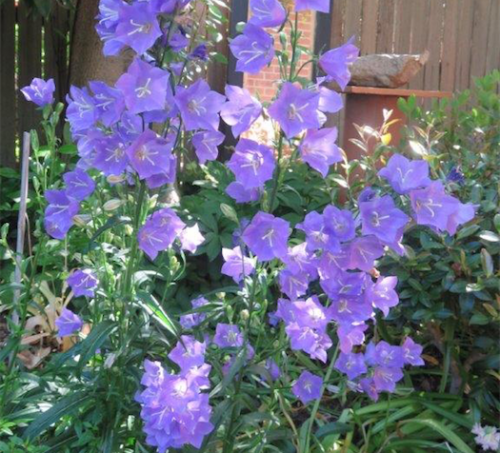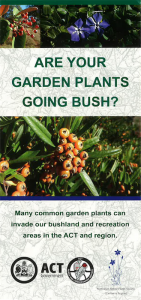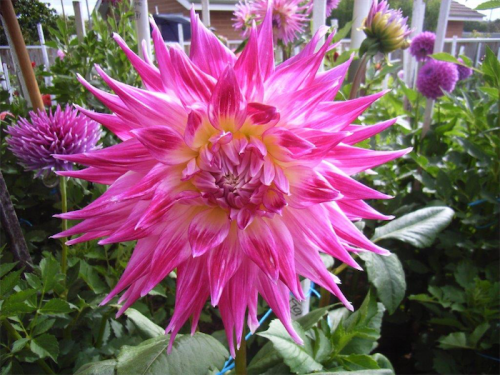
CAMPANULAS or “Canterbury Bells”, a favourite perennial in gardens for generations, flower from now until autumn and once the flowers finish the leaves remain evergreen through winter.

They originate in the Mediterranean, thrive in our hot summers and are untroubled by our cold winters. There are more than 250 species of upright and groundcover campanulas.
Illustrated here is Campanula persicifolia “Telham Beauty”, possibly the most popular of the species. This has been growing and multiplying in our garden for more than 10 years. Also available is “Alba”, a pure white, tall campanula.
But let’s look at some of the groundcover varieties that generally grow from 15-30 centimetres tall with a spread of 40 centimetres, although this depends on how well the soil is prepared.
Here are a few campanula varieties available from most garden centres:
- “Barbara Valentine” with large light violet trumpet flowers.
- “Catharina” with a mass of tiny purple flowers.
- A wider spreading groundcover is “EH Frost”, which as the name suggests is covered in small, white flowers; ideal for growing over a stone retaining wall.
- “Mulberry Rose” provides a contrast in colour.
LAWN grubs can attack and decimate lawns at any time now. They live underground feeding on the grass roots and usually the first indication is when you see magpies digging in the lawn looking for them.
But when you see dead patches of grass it’s usually too late to do much about them. However, a firm from Yass, Coochie Hydrogreen, that I have used for more than 15 years comes and sprays our lawn for these grubs and at the same time giving it a feed plus a weed kill.
Now Australia’s largest technical lawn-care company, Coochie Hydrogreen saved me buying three different products, then having to wash out the sprayer every time. The company has a year-round lawn care program, calling six times a year to keep lawns lush and green. Call Coochie on 1800 245955.
 WHEN buying an older home there are possibly plants in the garden that were part of the ACT government free-plant scheme from the Yarralumla Nursery. Unfortunately, some of these plants are now classified as environmental weeds. There’s a leaflet available from government shopfronts called “Are your garden plants going bush?” that will help identify them. It’s online here.
WHEN buying an older home there are possibly plants in the garden that were part of the ACT government free-plant scheme from the Yarralumla Nursery. Unfortunately, some of these plants are now classified as environmental weeds. There’s a leaflet available from government shopfronts called “Are your garden plants going bush?” that will help identify them. It’s online here.
YES, it’s dry and to reinforce this the average annual rainfall here is 619mm. For the first 10 months of this year we have received only 232mm, against an average of about 515mm for those 10 months.
It was reported recently by Icon Water that although the dam levels are down to 60 per cent there are no plans for water restrictions this summer. However, Icon Water advises that under the Permanent Water Conservation Measures watering lawns and gardens with sprinklers is not permissible after 9am and before 6pm. Obviously, this makes sense, watering during the heat of the day with high evaporation rates is not realistic. Be warned, fines apply.
Jottings…
- More chopping back of perennials, this time salvias need to be reduced by 50 per cent in height now and again in January to promote good autumn flowering.

- Dahlias (pictured) can still be planted, but without delay for autumn colour.
- Remove dead leaves and flower stalks from bearded iris, a harbour for snails.
- Plant autumn-flowering bulbs now, including nerines, colchicum and lycoris.
Who can be trusted?
In a world of spin and confusion, there’s never been a more important time to support independent journalism in Canberra.
If you trust our work online and want to enforce the power of independent voices, I invite you to make a small contribution.
Every dollar of support is invested back into our journalism to help keep citynews.com.au strong and free.
Thank you,
Ian Meikle, editor




Leave a Reply